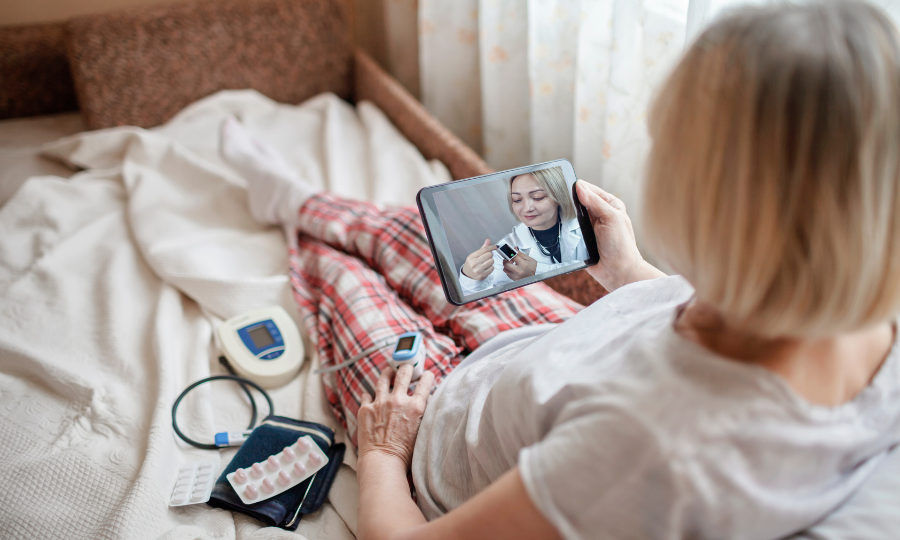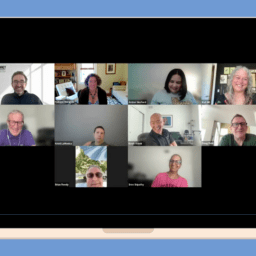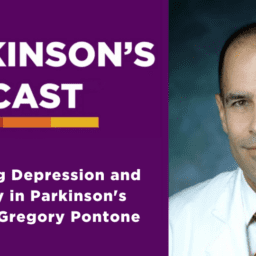While telehealth has been around for many years, the COVID-19 pandemic accelerated access to and use of this tool. Two years later, we are still learning how to navigate this new hybrid world that is here to stay. But what should the role of telehealth really be in a comprehensive care strategy?
In the following videos, Dr. Indu Subramanian and Dr. Greg Pontone dig into this question to learn more about how to best integrate telehealth into our living well toolkit. We also explore when an in-person visit is best, what to do if telehealth is the only option, and how issues such as digital literacy and broadband access impact access to this tool.
The pros and cons of telehealth for Parkinson’s
To download the transcript for “The Pros and Cons of Telehealth of Parkinson’s”, click here.
when to choose telehealth over in-person care for parkinson’s
To download the transcript for “When To Choose Telehealth Over In-Person Care,” click here.
how to get the most from your telehealth visit for parkinson’s
To download the transcript for “How to Get the Most From Your Telehealth Visit For Parkinson’s,” click here.
concerns about using telehealth appropriately for parkinson’s
To download the transcript for “Concerns About Using Telehealth Appropriately For Parkinson’s,” click here.
Key takeaways:
- When deciding between a telehealth visit or an in-person visit, it’s important to do a risk/benefit analysis. If your health or safety is at risk (due to the COVID-19 pandemic or any other reason),telehealth may be the best choice to keep you safe
- In-person visits are best suited when you haven’t seen your doctor for a while and when physical assessments, observations, and tests are needed to assess how you are doing
- There are many aspects of care that are not able to translate to a virtual visit. If you are not sure which kind of visit you need, talk to your doctor
- Telehealth visits may allow you to see your doctor more often (in between in-person visits) and may help you keep an appointment that may otherwise be canceled due to weather, transportation, or other barriers
- Treat your telehealth visit the same as you would a visit to your doctor’s office:
- Establish and test your technology in advance if you can. If you need help with the technology, ask someone to come over to get you set up
- Prepare what you want to talk about and keep your medication bottles close in case you need to reference them
- Show up early (and wait if you doctor is running behind)
- Meet in a quiet, private space with good lighting
- Be selective about who you allow in the room with you. If you wouldn’t bring that person to an in-person appointment, do not allow them to be present at your virtual appointment
- Some people underreport their symptoms when meeting virtually. To get the most out of your visit, share as much as you can and be honest about how you are doing. In a virtual setting, the doctor already has limitations of what they can observe. Help your doctor serve you best by being prepared and sharing what’s really going on
About Our Experts:
 GREGORY PONTONE, MD, MHS
GREGORY PONTONE, MD, MHS
Dr. Pontone is an Associate Professor in the Departments of Psychiatry and Neurology at Johns Hopkins University School of Medicine in Baltimore, Maryland. He is an Attending Psychiatrist in the Geriatric and Neuropsychiatry division and is the Director of the Johns Hopkins Parkinson’s disease Neuropsychiatry Clinic, which focuses on diagnosing and treating the neuropsychiatric aspects of Parkinson’s and related disorders. Dr. Pontone’s research focuses on the interaction between neuropsychiatric symptoms such as cognitive impairment, anxiety and depression, and motor impairment in Parkinson’s. After completing a medicine internship and residency training in psychiatry at Johns Hopkins, Dr. Pontone completed a two-year fellowship in geriatric psychiatry and movement disorders focusing on Parkinson’s through the Clinical Research Program of the Morris K. Udall Parkinson’s Disease Research Center at Johns Hopkins. He also completed a fellowship in Clinical Trial Methods in Neurology sponsored by the National Institute of Neurological Disorders and Stroke. Dr. Pontone also serves on the Scientific Review Committee and as the chair of the Cognitive/Psychiatric Working Group for an international consortium of Parkinson’s disease researchers, the Parkinson Study Group.
 INDU SUBRAMANIAN, MD
INDU SUBRAMANIAN, MD
Dr. Subramanian received her medical degree from the University of Toronto, Canada. She did her neurology residency and Movement Disorders fellowship training at UCLA. Dr. Subramanian has stayed on at UCLA and is now a Clinical Professor of Neurology. She established the movement disorder clinic at the West Los Angeles Veterans Administration and has assumed the position of the Director of the Southwest PADRECC (Parkinson Disease Research, Education, and Clinical Care) Center of Excellence in Parkinson’s. She has developed a strong interest in integrative medicine with a special interest in Yoga and Mindfulness. She underwent a 200-hour yoga teacher training and studied mindfulness at the VA with J.G.Serpa and Christian Wolfe through Insight LA. She is designing a yoga teacher training program for yoga instructors who are interested in working with people with Parkinson’s. Dr. Subramanian recently got board certified in Integrative medicine. She is also passionate about palliative care in Parkinson’s. She is doing a contemplative fellowship for health care providers through the New York Zen Center and is an AAN Palitucci Fellow. She is the host of a virtual support group with world experts in Parkinson’s and co-edits a blog for people with Parkinson’s.
With a special thanks to:


















